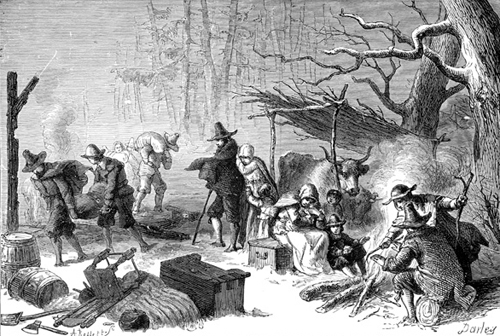By Dan Shine
Voice Columnist

Our Congregational Roots:
The New Haven Colony
The New Haven Colony, settled in 1638, was the strictest of the colonies in its adherence to Puritanism; indeed, New Haven clung to the Puritan way of life long after it had disappeared elsewhere.
New Haven’s 500 original settlers were the followers of the powerful and dynamic minister John Davenport, and his friend Theophilius Eaton; together they had come to this area by way of Boston. Finding Boston too liberal-thinking for their ultra-conservative tastes, the group traveled again by ship to the place known as Quinnipiac, and settled there, renaming it New Haven.
It was the dream of this group to escape English persecution and establish a church-run, theocratic, model community that would set an example for the other colonies and for England. In the words of Puritan minister John Winthrop, “We shall be as a city on a hill, and the eyes of the world will be upon us.”
Built around nine square blocks, New Haven was the first “planned community” in the colonies. With its natural harbor, New Haven was predestined to one day become a thriving commercial center.
For 28 years, New Haven existed as an independent colony, until it was annexed by the the Connecticut Colony in 1665. This change was not at all popular with the Puritans, but by now they were no longer alone in the colony that they had founded.
Fearing the secularization and religious dilution that they expected would evolve in the settlement, the Puritans migrated once again, and established what today is known as Newark, New Jersey. It is noted that historically, this repeated migration was normal behavior among Puritans in the Colonies, who often moved again and again.
The community that the Puritans had established here did not crumble when they moved on; instead it grew and flourished. In New Haven, where once Puritanism had prevailed, Congregationalism now began to take root.